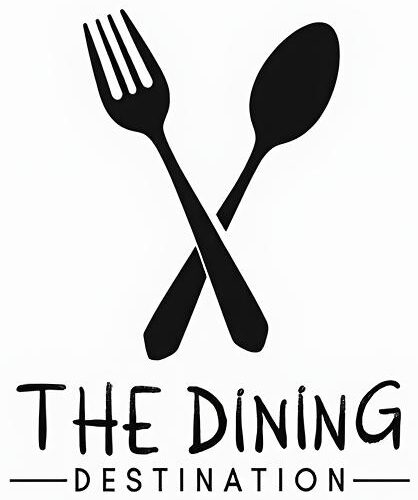Why Tomahawk Steak is the Ultimate Culinary Show-Stopper
A tomahawk steak is a thick, bone-in ribeye cut with a long French-trimmed rib bone that resembles a tomahawk axe handle. This impressive cut typically weighs 30-55 ounces, stands 2+ inches thick, and delivers rich marbling with dramatic presentation that makes it perfect for special occasions.
Quick Tomahawk Steak Facts:
- Cut: Bone-in ribeye from ribs 6-12 of the cow
- Weight: 30-55 ounces (1.8-3.4 pounds)
- Thickness: 2-2.5 inches typically
- Serves: 2-4 people depending on appetite
- Price Range: $15-30 per pound retail, $50-100+ at restaurants
- Best Cooking Method: Reverse sear (low oven then high-heat sear)
- Target Temperature: 130-135°F internal for medium-rare
If you’ve ever dreamed of creating that wow factor moment at your dinner table, the tomahawk steak delivers exactly that experience. As one passionate cook put it: “It’s the steak you see when you close your eyes and dream. It’s the steak that Fred Flintstone ate. It’s over the top.”
This beginner’s guide will walk you through everything you need to master this show-stopping cut. From selecting the perfect tomahawk at your local butcher to nailing the reverse-sear technique that ensures restaurant-quality results every time.
Whether you’re planning a special celebration dinner or want to impress fellow food lovers, understanding how to choose, cook, and serve a tomahawk steak opens up incredible dining experiences.
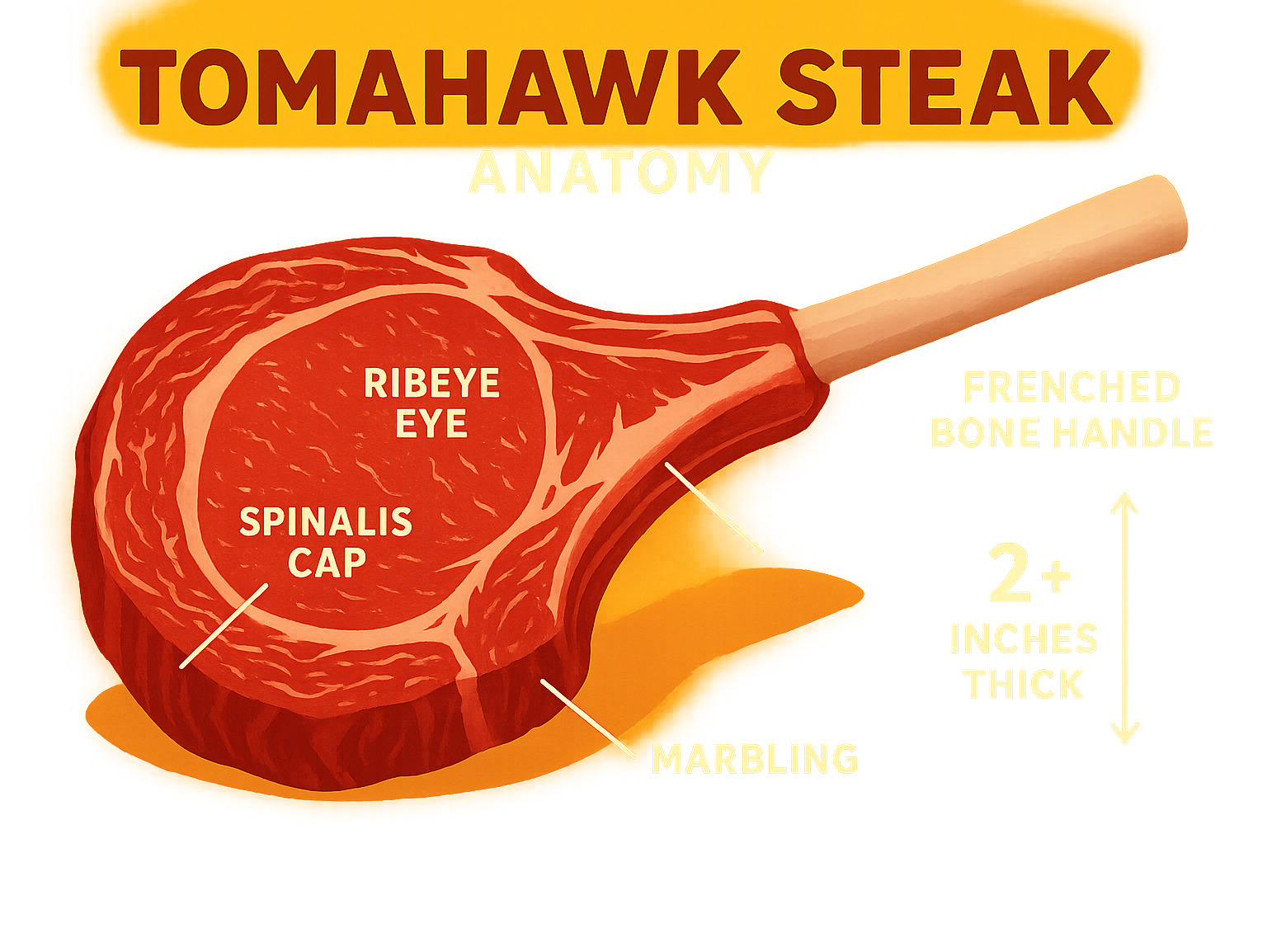
Tomahawk steak vocab to learn:
Tomahawk Steak 101
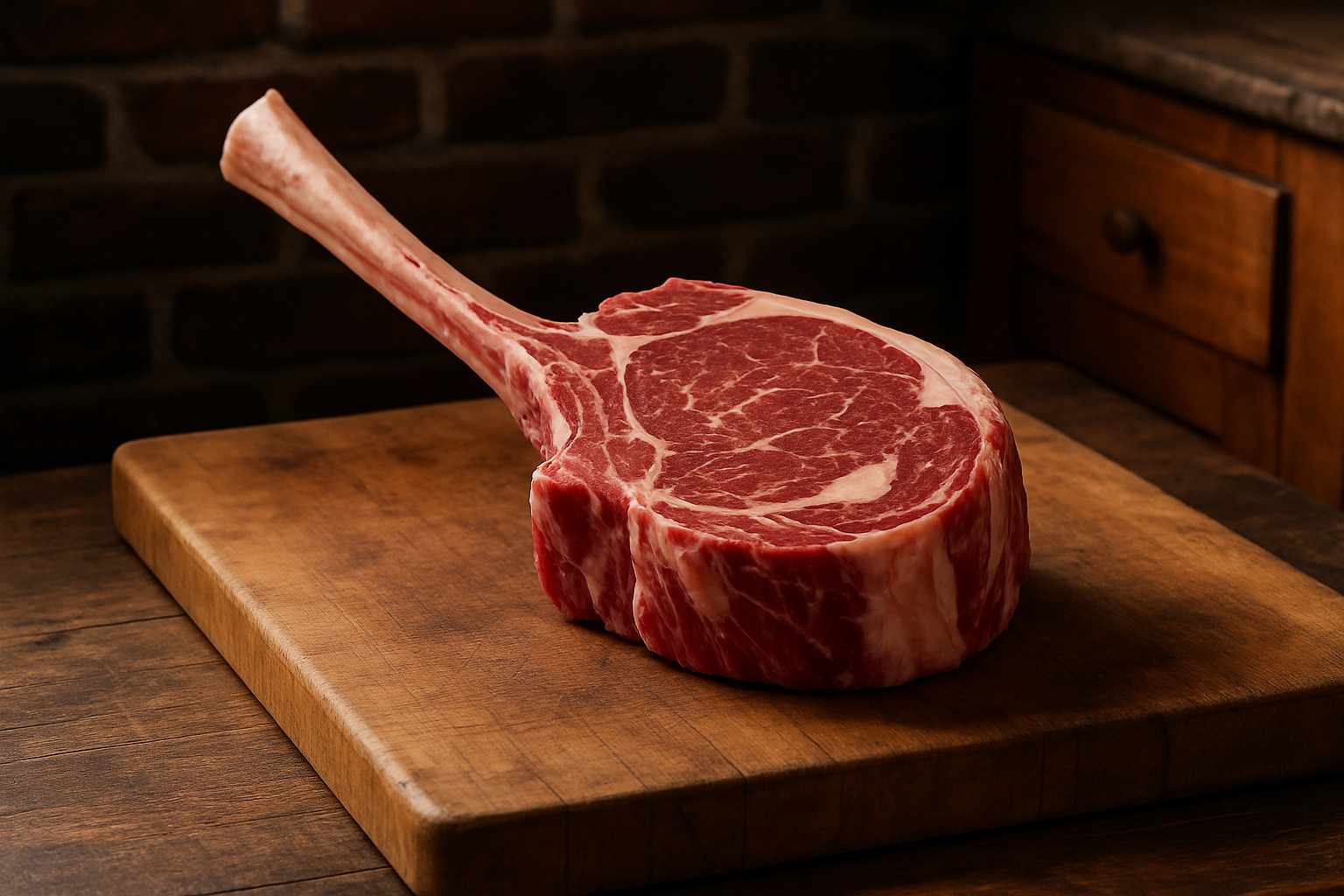
The tomahawk steak is essentially a bone-in ribeye that’s gone to the gym and gotten dramatic. This impressive cut comes from the rib primal section of the cow, specifically from ribs 6 through 12, where the most tender and well-marbled meat lives.
What transforms an ordinary ribeye into a show-stopping tomahawk steak is the frenched bone – that long, cleaned rib bone extending 5 to 8 inches from the meat. The butcher carefully scrapes away all meat and fat from this bone, creating that signature axe-handle appearance that gives the cut its name.
When you look at a tomahawk, you’re seeing three main muscle groups working together. The longissimus dorsi forms the “eye” of the ribeye – that’s the large, round section. The spinalis creates the flavorful “cap” that wraps around the top, often considered the most delicious part. Finally, the complexus adds extra richness to each bite.
The real magic happens in the marbling. Those white streaks of fat threading through the deep red meat aren’t just pretty – they’re flavor bombs waiting to melt and baste the steak from the inside as it cooks.
| Feature | Tomahawk Steak | Regular Ribeye |
|---|---|---|
| Bone Length | 5-8 inches | None or 1-2 inches |
| Thickness | 2-2.5 inches | 1-1.5 inches |
| Weight | 30-55 oz | 12-16 oz |
| Presentation | Dramatic | Standard |
| Price | $15-30/lb | $12-25/lb |
| Cooking Method | Reverse sear preferred | Direct sear works |
Origin & Naming
The tomahawk steak gets its name from its striking resemblance to a Native American tomahawk axe – the long, clean bone serves as the handle, while the thick ribeye becomes the blade.
Native American tribes historically made practical use of buffalo rib bones as tool handles after cooking and eating the meat. Today’s tomahawk steak honors this resourceful tradition, though we’re more likely to use it for Instagram photos than chopping wood.
The cut really took off in mid-century steakhouses across America. Smart chefs and restaurateurs realized that this dramatic presentation could transform an ordinary dinner into dinner theater.
Tomahawk Steak vs Other Rib Cuts
The cowboy steak is basically the tomahawk’s practical sibling. It features the same delicious ribeye meat but with a shorter bone – usually 2 to 3 inches instead of the tomahawk’s dramatic 5 to 8 inches.
A traditional bone-in ribeye keeps things simple with the natural bone intact, typically extending just 1 to 2 inches from the meat.
Prime rib takes a different approach entirely. Instead of individual steaks, it’s a slow-roasted rib roast that gets sliced to order.
The tomahawk steak’s long bone isn’t just for show – it actually serves as a natural heat barrier during cooking, helping the meat retain its juices while creating incredible grill marks and crust.
Choosing & Buying the Perfect Cut
Finding the perfect tomahawk steak is like treasure hunting – you’ll know it when you see it. The secret lies in understanding what makes one cut exceptional while another falls flat.
Marbling is your best friend here. Those beautiful white streaks of fat threading through the deep red meat aren’t just pretty – they’re flavor gold. Look for consistent marbling throughout the entire cut, not just in patches.
USDA Prime grade represents the top 2% of beef in America, offering the most generous marbling. While it costs more, the difference in your final dish is remarkable. USDA Choice can still deliver fantastic results if you choose wisely.
Dry-aged steaks aged 30-60 days develop concentrated flavors and improved tenderness that’s hard to beat. The aging process breaks down muscle fibers while concentrating the beef’s natural flavors.
Your ideal tomahawk steak should weigh between 30-55 ounces – that’s roughly 2 to 3.5 pounds total. You’re paying for bone weight too, so a 40-ounce steak might include 10-15 ounces of bone. The bone should extend at least 5 inches from the meat with clean, professional frenching.
Fresh meat shows deep red color with bright white fat. Avoid any cuts with brown or gray patches, which indicate age or poor handling. The fat should look creamy white, not yellow or gray.
Your local butcher often provides the best quality and service. They can custom-cut your steak to specific thickness and explain their sourcing. Many high-end grocery stores now stock tomahawks in their premium sections, while online specialty retailers offer access to grass-fed and specially aged options.
Expect to pay $15-30 per pound at retail, though premium options can cost more. As scientific research on thick-cut steaks shows, the thickness creates unique cooking challenges that make choosing quality cuts even more important for success.
If you’re passionate about expanding your culinary skills beyond steaks, our Chef-Led Experiences connect you with professional chefs who can teach advanced techniques for handling premium cuts like these.
Cooking Like a Pro: Techniques & Temperatures

Here’s the truth about cooking a tomahawk steak: if you treat it like a regular steak, you’ll end up disappointed. That impressive 2-inch thickness that makes it such a showstopper also creates a real cooking challenge. Try the traditional hot-and-fast approach, and you’ll get a beautifully charred exterior wrapped around a cold, raw center.
The secret weapon? The reverse-sear method, a technique that food scientist J. Kenji López-Alt helped popularize. Instead of starting with high heat, you flip the script entirely – low and slow first, then a blazing hot finish.
Your internal temperature targets are crucial here: aim for 120-125°F for rare, 130-135°F for medium-rare (the sweet spot), 135-145°F for medium, or 145-155°F for medium-well. A good instant-read thermometer isn’t optional – it’s your best friend when cooking thick cuts like this.
You’ll need a few key pieces of equipment to nail this technique. A cast-iron skillet distributes heat beautifully and holds temperature like a champ. A probe thermometer lets you monitor progress without constantly opening the oven. And a wire rack lifts your steak for even air circulation during the slow-cooking phase.
The genius of reverse-searing lies in how it works with thick cuts. By bringing the tomahawk steak slowly up to temperature in a low oven, you create an even doneness from edge to center. Then that final high-heat sear develops the crust we all crave without overcooking the interior.
One important note from scientific research on carry-over cooking: your steak’s internal temperature keeps climbing 3-5°F even after you remove it from heat. This means timing your temperature pulls correctly makes the difference between perfect and overcooked.
Reverse Sear Tomahawk Steak Step-by-Step
The reverse-sear method transforms what seems like an intimidating cut into a manageable, almost foolproof process. Here’s how to nail it every time.
Start with proper preparation. Pull your tomahawk steak from the fridge 1-2 hours before cooking – this helps it cook more evenly. Pat it completely dry with paper towels (moisture is the enemy of good searing), then season generously with kosher salt and freshly ground black pepper. Let those seasonings work their magic while the steak comes to room temperature.
The low-and-slow phase begins with your oven preheated to 225°F. Place the steak on a wire rack set over a baking sheet – this setup lets air circulate all around for even cooking. Slide it into the oven and wait patiently. You’re looking for an internal temperature of 110-115°F, which typically takes 45-55 minutes depending on thickness.
Once you hit that target, remove the steak and tent it loosely with foil. This 10-minute rest lets the temperature even out throughout the meat.
Now comes the exciting part – the high-heat sear. Get your cast-iron skillet screaming hot over high heat until it’s smoking. Add a neutral oil like canola or grapeseed (skip the olive oil here – it can’t handle the heat). When the oil shimmers, lay in your steak.
Sear for 3-4 minutes per side until you get that deep, gorgeous brown crust. During the final minute, add a knob of butter, some smashed garlic, and fresh thyme sprigs. Tilt the pan and baste continuously with that aromatic, foaming butter – this technique is called butter basting, and it adds incredible flavor.
The final rest is crucial. Give your tomahawk steak another 5-10 minutes before slicing. The internal temperature should coast up to that perfect 130-135°F for medium-rare.
This method works so well because it respects what makes thick cuts special while addressing their challenges. You get edge-to-edge doneness with a restaurant-quality crust.
If you’re interested in expanding your cooking skills beyond steaks, our Ground Beef Recipes offer great techniques that complement what you’ll learn with premium cuts.
Indoor Tomahawk Steak Without a Grill
Living in an apartment or dealing with bad weather? Don’t worry – you can absolutely create an amazing tomahawk steak indoors using your oven and stovetop.
The cast-iron and oven combination actually gives you more control than most outdoor grills. The key is managing the smoke situation smartly. Open your windows before you start, and if you have a particularly sensitive smoke alarm, you might want to temporarily disable it (just don’t forget to turn it back on afterward).
Choose your oil wisely for indoor searing. Neutral oils like canola, grapeseed, or avocado oil have high smoke points and won’t break down under intense heat. Olive oil, while delicious, will smoke excessively and create bitter flavors at searing temperatures.
Here’s a great alternative to stovetop searing: finish under your broiler instead. After the low-temperature oven phase, switch to broiler mode and position your rack about 4-6 inches from the heating element. This gives you intense, even heat without the stovetop smoke.
One pro tip for broiler searing: scrunch up some aluminum foil and place it under your steak to lift it slightly. This prevents the bottom from sitting in any rendered fat and helps achieve more even browning.
The indoor method can actually produce superior results to outdoor grilling because you have precise temperature control throughout the entire process. Your tomahawk steak will be just as impressive as any steakhouse version.
Serving & Pairing Your Showstopper
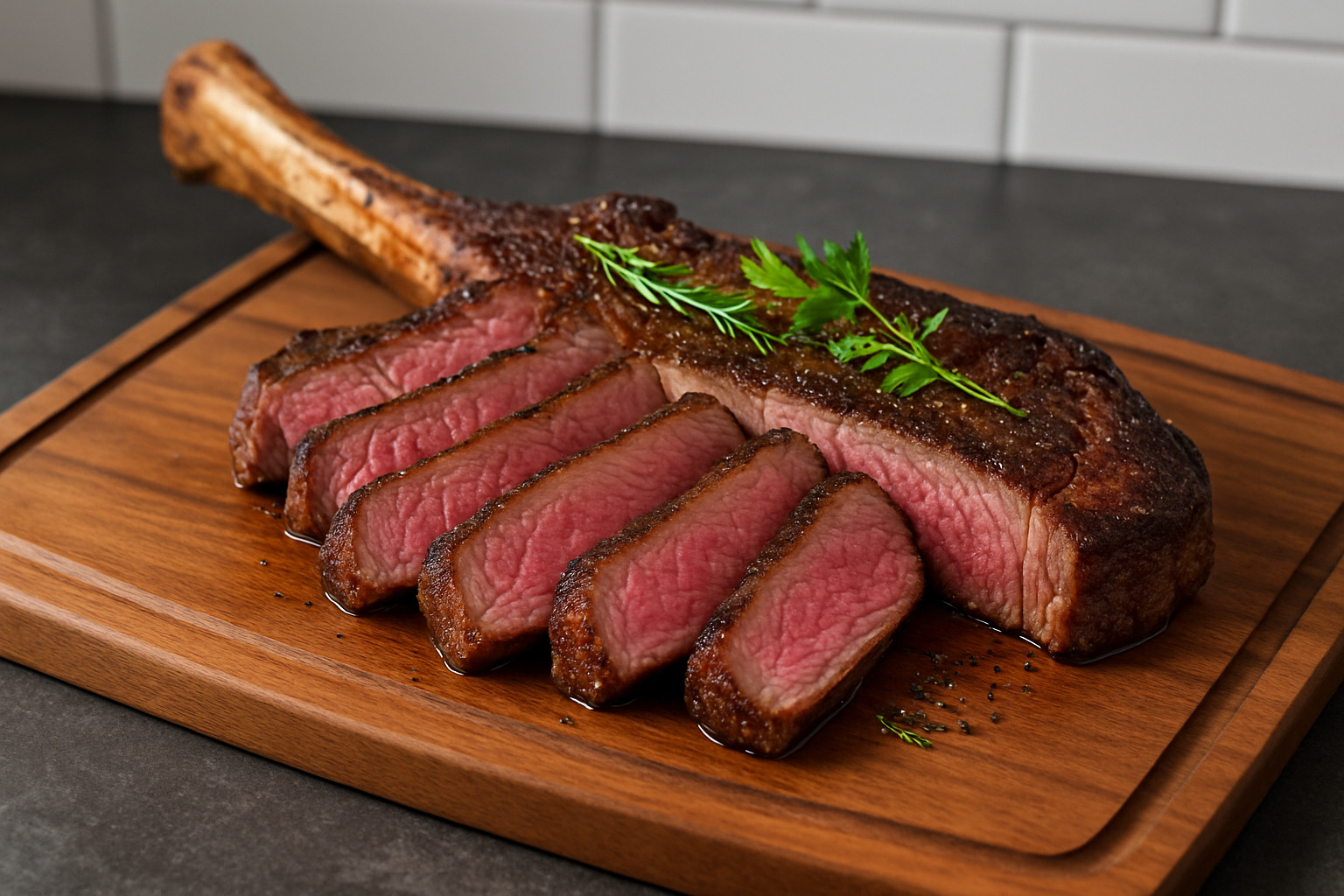
The moment your tomahawk steak emerges from the kitchen, you’ve got everyone’s attention. This isn’t just dinner – it’s dinner theater.
First things first: let that beautiful steak rest for 10-15 minutes after cooking. This resting period allows the juices to redistribute throughout the meat. Your patience will be rewarded with every juicy bite.
When it’s time to carve, use a sharp knife – dull blades will tear the meat and ruin your presentation. Slice against the grain in quarter-inch thick pieces, working your way around the bone.
Compound butter transforms a great steak into something extraordinary. Mix softened butter with garlic, fresh parsley, and lemon zest for a classic option. Try blue cheese and chives for bold flavor, or go with fresh thyme and rosemary for an herby twist.
Sauce lovers have plenty of options too. Chimichurri brings bright, fresh flavors with its blend of herbs, garlic, and olive oil. A peppercorn sauce made with cream, brandy, and crushed peppercorns adds sophisticated richness. For something with kick, horseradish cream provides that perfect sinus-clearing bite.
The wine pairing is where you can really shine. Bold reds like Cabernet Sauvignon or Malbec stand up beautifully to the rich marbling. If you prefer something lighter, Merlot or Côtes du Rhône work wonderfully. Feeling fancy? An aged Bordeaux will make this meal truly unforgettable.
Your side dishes should complement, not compete. Twice-baked potatoes loaded with cheese and chives are a steakhouse classic. Grilled asparagus with lemon adds brightness, while creamed spinach brings comfort. Don’t forget something fresh – a crisp Caesar salad cuts through the richness perfectly.
Quality steak knives make all the difference when serving thick cuts like this.
The tomahawk steak experience is about creating those special moments that stick with people long after dinner ends. For more ideas on creating unforgettable food moments, check out our guide to Best Culinary Experiences.
Storage, Reheating & Creative Leftovers
Having leftover tomahawk steak is a wonderful problem to have. That premium cut you spent so much time perfecting deserves the same care when storing and reheating.
The secret to maintaining quality starts with proper cool-down and storage. Never put hot steak directly in the refrigerator – let it cool completely at room temperature first. Once cooled, wrap tightly in airtight containers or vacuum-sealed bags.
Your refrigerated tomahawk steak will stay fresh for 3-4 days maximum. For longer storage, consider slicing the meat before refrigerating – it reheats more evenly and gives you better portion control.
When it comes to reheating, forget everything you know about microwaving leftover steak. The low-temperature oven method works beautifully – set your oven to 250°F and gently warm sliced steak for 10-15 minutes until heated through.
For the ultimate reheating experience, try the sous vide method if you have the equipment. Set your water bath to 130°F and warm the steak for 30 minutes.
The rich, beefy flavor of tomahawk steak actually shines in creative leftover applications. Steak sandwiches become gourmet experiences when you layer thin slices with caramelized onions and horseradish aioli on crusty bread.
Transform breakfast with a hearty steak hash – dice your leftover meat and sauté with crispy potatoes and farm eggs. The combination creates a restaurant-quality brunch.
For lighter options, sliced steak over Caesar salad turns a simple side into a complete meal. Steak tacos offer another crowd-pleasing direction – warm corn tortillas, salsa verde, and pickled onions create an exciting fusion experience.
One of our favorite applications is neat crostini for entertaining. Slice the steak paper-thin, layer over toasted baguette rounds with a touch of garlic and balsamic reduction.
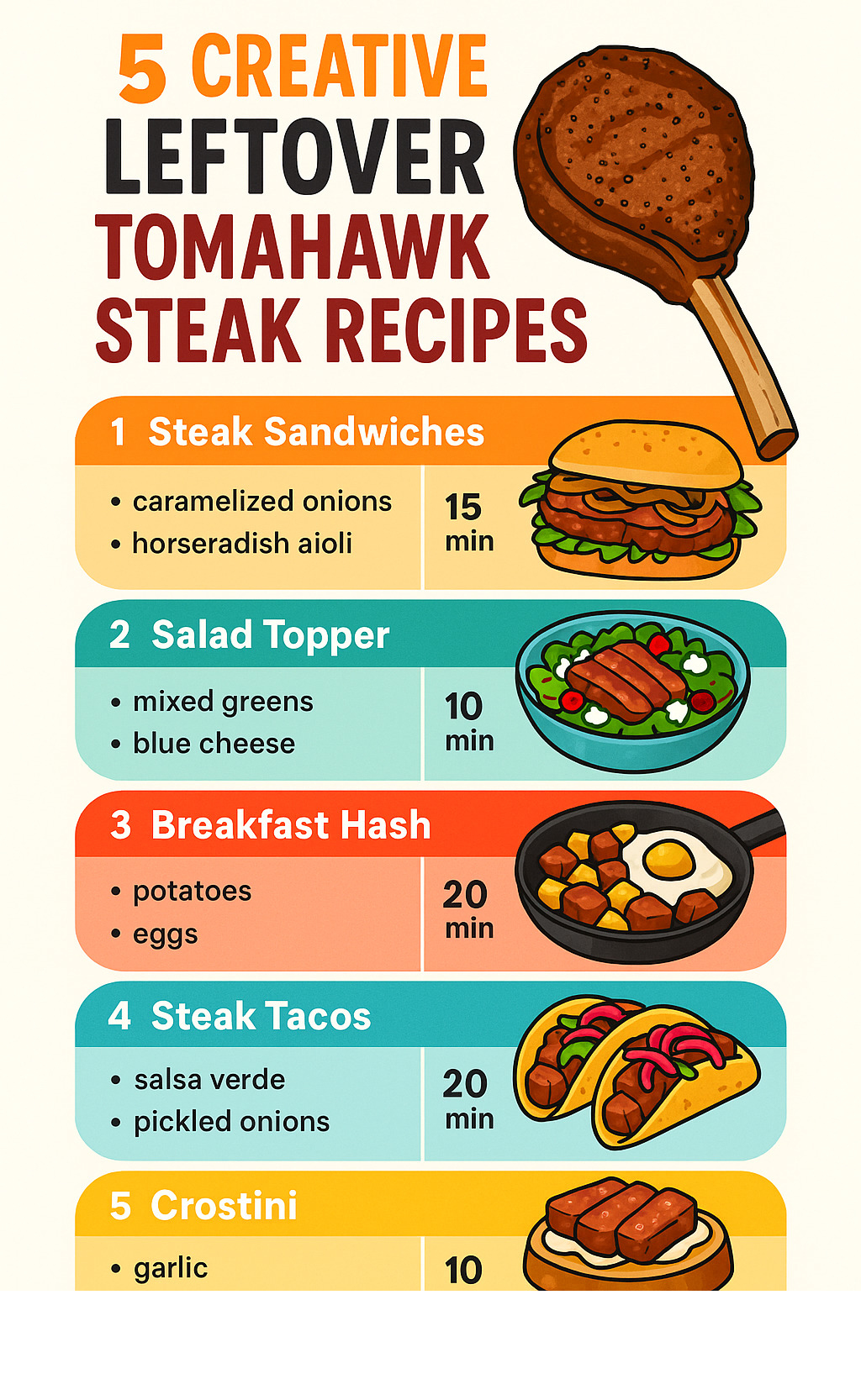
The key to successful leftover tomahawk steak is embracing its bold character rather than trying to recreate the original experience.
Frequently Asked Questions about Tomahawk Steak
Why is Tomahawk Steak So Expensive?
The tomahawk steak commands premium prices for several fascinating reasons that go beyond just the meat itself. When you’re paying $50-100 at a restaurant or $15-30 per pound at retail, you’re investing in much more than beef.
Bone weight accounts for a significant portion of the cost – that dramatic 5-8 inch handle represents 25-30% of what you’re paying for, yet adds zero edible value. It’s like buying a beautiful presentation piece along with your dinner.
The butcher labor involved is considerable. French-trimming that long bone requires skilled knife work and time. A butcher must carefully clean each rib bone, removing all meat and fat to create that clean, handle-like appearance. This specialized preparation adds labor costs that get passed to consumers.
Limited yield from each cow also drives prices up. The rib primal section only produces a handful of tomahawk steaks, making them naturally scarce compared to other cuts. When supply is limited but demand is high, prices reflect that reality.
Most importantly, you’re paying a presentation premium. Restaurants know that Instagram-worthy moment when the tomahawk steak arrives at your table is worth extra money. The theatrical element transforms a regular dinner into an experience.
How Many People Will One Tomahawk Steak Feed?
Planning portions for a tomahawk steak depends on your guests and the occasion. Most cuts weighing 40-50 ounces will comfortably serve 2-4 people, but several factors influence the math.
Appetite levels vary dramatically. Two hungry steak lovers might polish off a large tomahawk between them, especially if they’re celebrating a special occasion. However, most dinner parties find that 3-4 people can share one steak when it’s part of a complete meal.
The side-dish factor plays a huge role in stretching portions. Classic steakhouse accompaniments like loaded baked potatoes, creamed spinach, and Caesar salad help one steak satisfy more people. Rich sides complement the meat while filling everyone up.
Bone weight affects your calculations. That impressive bone handle accounts for roughly 10-15 ounces of the total weight, so a 45-ounce tomahawk yields about 30-35 ounces of actual meat.
For most dinner parties, plan one large tomahawk steak for every 3-4 guests. This allows everyone to experience the spectacle while ensuring no one leaves hungry.
Common Mistakes to Avoid When Cooking Tomahawk Steak
Even experienced cooks can stumble when tackling their first tomahawk steak. These thick, expensive cuts demand respect and proper technique to achieve restaurant-quality results.
Cooking without a thermometer tops the list of costly mistakes. The thickness makes visual cues unreliable – that perfect-looking exterior might hide a raw interior. An instant-read thermometer eliminates guesswork and protects your investment.
Skipping the rest period after cooking causes flavorful juices to run all over your cutting board instead of staying in the meat. Those 10-15 minutes of patience make the difference between good and great.
Many home cooks rely on high heat only, which creates a charred exterior before the interior reaches proper temperature. The reverse-sear method exists specifically to solve this problem with thick cuts.
Over-salting too early draws moisture from the surface, preventing proper crust formation. Season generously, but time it right for best results.
Using the wrong pan size creates problems too. That long bone needs space to maneuver – cramped conditions lead to uneven cooking and frustration.
Finally, ignoring carry-over cooking leads to overcooked steaks. Internal temperature continues rising 3-5°F after you remove the steak from heat. Pull early rather than risk overcooking this premium cut.
The most expensive lesson? You can always cook a tomahawk steak more, but you can’t undo overcooking. When in doubt, err on the side of caution.
Conclusion
Congratulations! You’ve just open uped the secrets to mastering the tomahawk steak – one of the most impressive cuts you can serve at your dinner table. From understanding the anatomy of this theatrical ribeye to nailing the reverse-sear technique, you now have everything needed to create restaurant-quality results in your own kitchen.
The journey from raw tomahawk steak to perfectly cooked centerpiece might seem intimidating at first, but remember the core principles that guarantee success. Choose cuts with beautiful marbling from trusted sources, accept the reverse-sear method for even cooking, and never skip the thermometer.
Most importantly, don’t forget that cooking a tomahawk steak is about more than just the meat itself. This cut transforms an ordinary dinner into an event. The dramatic presentation, the sizzling sounds, the incredible aroma – these elements create memories that last long after the last bite.
Whether you’re planning a romantic anniversary dinner, celebrating a special milestone, or simply want to surprise your family with something extraordinary, the tomahawk steak delivers that wow factor every single time.
At The Dining Destination, we believe the best culinary trips don’t always require a passport. Sometimes the most memorable food experiences happen right in your own dining room, surrounded by people you love. Mastering impressive cuts like the tomahawk steak brings that restaurant magic home.
As more home cooks accept sustainable practices, consider seeking out grass-fed or locally-sourced tomahawks when possible. Learn more about this growing movement in our guide to sustainable dining trends.
Your first tomahawk steak might feel like a big investment, but think of it as tuition for an unforgettable culinary education. Once you see the faces around your table light up at that first reveal, you’ll understand why this cut has become the ultimate dinner party showstopper.
So fire up that oven, get your cast-iron skillet ready, and prepare to create some delicious magic. Your perfectly cooked tomahawk steak trip starts now – and trust us, it’s going to be absolutely incredible.
